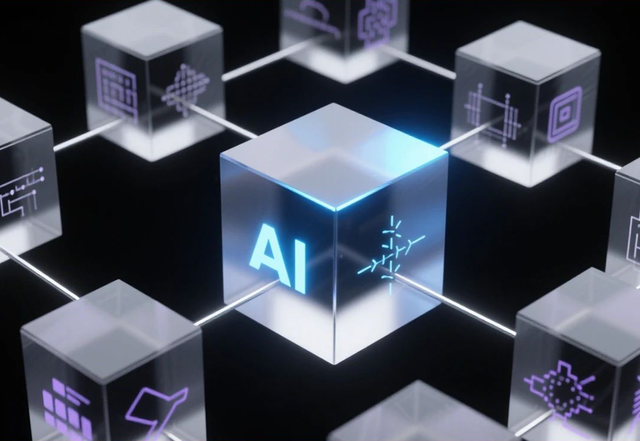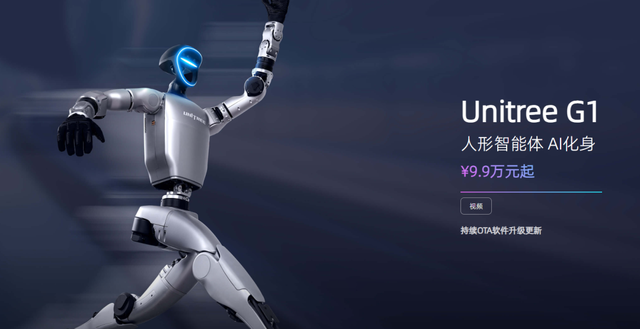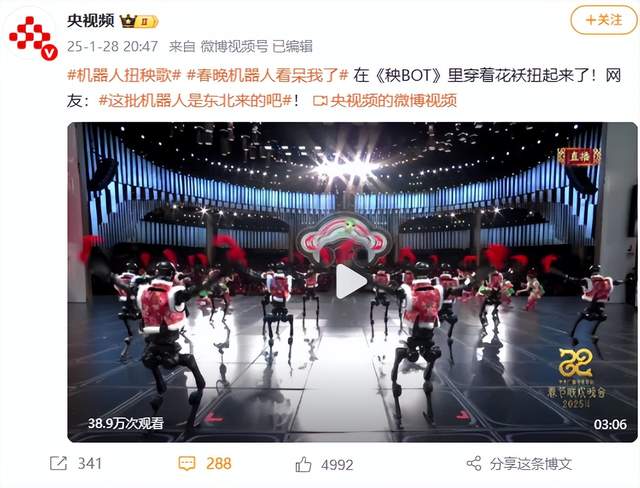Listing Imminent: Yushu's Wang Xingxing Expresses Discontent with AI Models
![]() 08/14 2025
08/14 2025
![]() 400
400

Source: Byte Source
Interesting events often converge at the same time.
At the 2025 World Robot Conference (WRC), Wang Xingxing, the founder of Yushu Technology who has propelled quadruped robot dogs to the global forefront and is hailed as a hardware prodigy of the 1990s, candidly addressed the audience. He asserted that in robotics, hardware has advanced sufficiently, but the real challenge lies in the "gross inadequacy of AI models."
Furthermore, he bluntly criticized the VLA model, which is widely pursued in the industry, as having a "dumb architecture." In a single sentence, he doused cold water on the industry's frenzy: "We've built the body, but the soul remains adrift."
Almost simultaneously, across the ocean, Jen-Hsun Huang of NVIDIA offered his response on the SIGGRAPH 2025 conference stage.
NVIDIA's ambitious physical AI large model, Cosmos, borders on arrogance—it aims to "ripen" robots' not-so-smart "brains" using endless synthetic data in the virtual world.
One is hungry, and the other serves the dish directly. The "collaboration" between these two companies is almost eerily perfect, a precise match between the industrial chain's upstream and downstream pain points and solutions.
However, to fully grasp this drama, one must not only focus on Wang Xingxing but also on Jen-Hsun Huang's counterpart in China, Liang Wenfeng, who, though equally young, is more "provocative" to him.
The stories of these three individuals intertwine to form a comprehensive narrative about robots, AI, and the core contradictions of our era.
01
The "Favored" One
Wang Xingxing's actions are unconventional.
What do founders of companies about to go public typically do? Report good news, paint a grand vision, and convey confidence.
But Wang Xingxing did none of these. At a time when the capital market most craves a "grand narrative," he actively exposed the industry's deepest anxiety.
On July 18, the China Securities Regulatory Commission's official website disclosed Yushu Technology's IPO coaching registration, with CITIC Securities as the coaching institution. This news rippled through the capital market. Notably, just three months prior, Yushu Technology had completed its Series C funding round, with giants like Tencent, Alibaba, Geely, and China Mobile joining forces to push its valuation from 7 billion yuan to 12 billion yuan.
At such a delicate juncture, Wang Xingxing's apparent disregard for short-term "IPO norms" suggests one thing: He has a powerful "patron" behind him—Jen-Hsun Huang and his NVIDIA—who can ignore short-term market sentiment and address the industry's fundamental issues.
At 26, Wang Xingxing left DJI and founded Yushu Technology. He explained that the name "Yushu" symbolizes illuminating the technology tree for humanity.
His approach to illuminating this tree is simple, direct, and somewhat brutal. At the time, the benchmark in robotics was Boston Dynamics in the US. Their products were technologically superior but also prohibitively expensive, often costing hundreds of thousands of dollars. Wang Xingxing bucked this trend, insisting on using lower-cost, more flexible electric drive technology to circumvent Boston Dynamics' long-established hydraulic system.
Of course, this magic didn't happen overnight. As he tackled complex motion control algorithms, NVIDIA stood behind him. As early as 2020, NVIDIA placed an order with Yushu. These "tin toys" once scorned by domestic investors were quietly bought by Silicon Valley giants for internal research.
During the "grand finale" segment of the NVIDIA GTC Conference in 2024, Jen-Hsun Huang appeared on stage with nine humanoid robots, among which the second from the left was Yushu Technology's Unitree H1.
Then, Wang Xingxing drove down prices. When Yushu Technology launched the 99,000-yuan humanoid robot G1, the entire industry was shaken. Wang Xingxing's philosophy was straightforward: "I want more people to use robots first."

Screenshot from Yushu Technology's official website
The market's response was remarkable. Yushu's robot dogs captured nearly 70% of the global market share, with Google, Amazon, and NVIDIA among its customers. His robots even graced the stage of CCTV's Spring Festival Gala, dancing with actors.
By this point, Wang Xingxing had reached the pinnacle of his life, becoming not only a popular tech star but also attending the private entrepreneur symposium after the Spring Festival.
However, success was followed by troubles. Many users who ordered Yushu robots posted reviews on various social platforms, stating that the robots' functionalities fell far short of the promotions, likening it to "spending hundreds of thousands of yuan on a toy." Someone who earned tens of thousands of yuan daily by renting Yushu robots in February found that by April, the robots could no longer be rented out.
Yet, amidst the controversy, NVIDIA's support remained steadfast.
In February, Carnegie Mellon University's research team and NVIDIA jointly released the ASAP framework and applied it to Yushu Technology's G1 humanoid robot. Disclosed videos showed G1 performing complex actions like shooting and dribbling under its legs, reminiscent of sports stars Cristiano Ronaldo, Kobe Bryant, and LeBron James.
A top academic institution and a tech giant jointly "showcasing" a startup's product is a privilege Jen-Hsun Huang would never extend to any ordinary customer.
Therefore, when Wang Xingxing said, "AI models are insufficient," it should be interpreted from a different lens. He wasn't expressing dissatisfaction but indulging in a kind of "Versailles." His underlying message was: "Look, the cutting-edge tools NVIDIA gave me are almost fully utilized, and we've jointly explored the boundaries of current technology."
02
The Man in the Leather Jacket and His "Virtual Universe"
Jen-Hsun Huang heard Wang Xingxing's voice.
Or rather, he had been anticipating such a voice.
The launch of the Cosmos platform was meticulously timed, akin to a surgical operation. Wang Xingxing complained about insufficient data, and Jen-Hsun Huang provided a "virtual world" capable of generating massive synthetic data. Wang Xingxing lamented the models' stupidity, and Jen-Hsun Huang presented Cosmos Reason, a 7-billion-parameter inference model.
He wasn't selling a product; he was selling a future—a future of "simulation first."
He explained that training robots in the real world is too slow, expensive, and dangerous. The only solution is to let AI evolve safely and efficiently in the "virtual parallel universe" he created. He used autonomous driving as an example: "We can never use children as training samples in front of cars. It's immoral and dangerous... The real choice can only be achieved through simulation."
This logic was almost irresistible for Wang Xingxing and others eager for robots to achieve "enlightenment."
Jen-Hsun Huang is a shrewd businessman, a CEO renowned as a "gold medalist salesman" and famous for his relentless work ethic. He works seven days a week, constantly pondering the company's future. He's acutely aware of the Chinese market's importance. In 2024, the Chinese mainland and Hong Kong markets contributed $17.1 billion in revenue to NVIDIA. Hence, he frequently visits China, with his July trip to Beijing being his third this year.
He stood beside Xiaomi's electric car, clad in his signature black leather jacket, posing for a photo with Xiaomi's Lei Jun, even under Beijing's midsummer sun. Later, he'd shed his leather jacket, don a Tang suit, and deliver a speech in slightly awkward Chinese, praising "China's open-source AI as a catalyst for global progress."
At the company's 2024 annual meeting, Jen-Hsun Huang even donned a Northeast floral cotton-padded jacket and clumsily danced the Yangko dance. Coincidentally, a year after his Yangko dance, Yushu's robots performed a similarly styled "YangBOT" on the Spring Festival Gala stage.

Screenshot from Weibo @CCTV Video
Just days before appearing on the Spring Festival Gala, Wang Xingxing also attended NVIDIA's dinner and sat beside Jen-Hsun Huang. No one would believe there was no tacit understanding between them.
At that time, Wang Xingxing also posted a photo with Jen-Hsun Huang on his personal social media platform, captioning it, "A new year, a fresh start, let's go!"; Wang He, the founder and CTO of Galaxy General, also sat beside Jen-Hsun Huang at the dinner.
The same combination reappeared at the 2025 World Robot Conference (WRC), coinciding with Yushu's IPO's critical juncture, except that Jen-Hsun Huang was replaced by Rev Lebaredian, NVIDIA's vice president of Omniverse and simulation technology.
This tacit understanding stems from a deep commercial symbiosis. Jen-Hsun Huang needs Wang Xingxing. He needs Yushu's robots to run, jump, and backflip on the global stage because every stunning performance is the most vivid advertisement for his vision of "physical AI," generating real demand for his expensive chips and platforms.
If the story ended here, it would be a run-of-the-mill tale of a supplier and a customer. Jen-Hsun Huang's chess game is far more intricate. To understand his true intentions, we must introduce another of his "partners"—Liang Wenfeng, the founder of DeepSeek.
03
Different Gemini
If Wang Xingxing is Jen-Hsun Huang's ideal "preacher," then Liang Wenfeng is the "friend-turned-foe" trump card in his hand.
Wang Xingxing's Yushu Technology complements NVIDIA's business perfectly. The more successful Yushu becomes and the more robots it sells, the more it validates NVIDIA's platform's value.
Wang Xingxing is a "model student" within the NVIDIA ecosystem. Even though NVIDIA hasn't participated in any funding rounds for Yushu Technology, he's still considered an "insider" by Jen-Hsun Huang.
However, Liang Wenfeng's DeepSeek is a different story altogether.
He's in direct competition with NVIDIA's top customers—Silicon Valley tech giants like OpenAI and Google. His existence even poses a potential threat to Jen-Hsun Huang's direct business, once disrupting NVIDIA's core computational power narrative.
After all, Liang Wenfeng's move cratered NVIDIA's market value by billions of dollars; he's no ordinary figure.
This is precisely where Jen-Hsun Huang needs him. During Jen-Hsun Huang's second China visit this year, rumors circulated about secret talks between him and Liang Wenfeng.
This is Jen-Hsun Huang's top-tier "open strategy": He needs a "challenger" from China who can constantly pressure Silicon Valley giants like OpenAI with extreme cost-effectiveness. Jen-Hsun Huang eagerly hopes that DeepSeek can train large models using the "castrated" H20 chip at one-twentieth of the industry average training cost, employing an almost unreasonable approach to make OpenAI and others feel anxious. And this anxiety will directly translate into huge orders for NVIDIA's outrageously expensive chips (like the H100 and B200).
Therefore, when the H20 chip was banned, and Liang Wenfeng's R2 model faced production difficulties with a 70% drop in website traffic, Jen-Hsun Huang flew to Beijing despite the scorching heat to announce the resumption of H20 sales in China.
With Silicon Valley giants like OpenAI and Google unveiling upgraded models, Jen-Hsun Huang needs Liang Wenfeng to keep fighting more than ever, needing this "catfish" to continue stirring up the global computational power competition.
Just a day before this article's publication, the market confirmed that the R2 model's delay would continue. Rumors of its August launch were refuted. Faced with the indefinite delay of the R2 model, Jen-Hsun Huang might be more anxious than Liang Wenfeng.
So, one is an ecosystem builder, and the other is a competition catalyst, continuously driving NVIDIA's growth from both internal and external dimensions. Wang Xingxing and Liang Wenfeng, this pair of technological "Gemini" in China, jointly constitute Jen-Hsun Huang's balancing act in the Chinese market and even the global chess game.
But whether it's the "preacher" who is favored or the "challenger" who is utilized, they both tread the same tightrope.
This tightrope is called geopolitical games.
The H20 chip ban was a deep wound for Liang Wenfeng and a constant warning bell for Wang Xingxing. No matter how robust the business logic or close the cooperative relationship, it can be easily shattered by a Washington ban. The H20 ban once caused NVIDIA to accrue $4.5 billion in inventory impairment and lose $2.5 billion in potential sales.
When cooperation extends to platforms and "world models" like Cosmos, the risk escalates from "choking the neck" to "stealing the soul." Discontinuing chip supply can still find alternative solutions, but if the simulation platforms and data generation tools relied upon by the entire R&D process are restricted, it's akin to pulling the rug out from under enterprises deeply integrated into this ecosystem.
At the end of July, China's Cyberspace Administration interviewed NVIDIA regarding the potential security risks of "tracking and positioning" and "remote shutdown" backdoors in the H20 computing power chip, just half a month after Jen-Hsun Huang announced the lifting of the H20 ban.
It's evident that both ends of this tightrope are tightening.
For robots that need to penetrate deeply into factories and homes, interacting intimately with the physical world, the security of their core AI platform and the sovereignty of their data inevitably become paramount concerns. This renders the collaboration between Wang Xingxing and Jen-Hsun Huang akin to an alluring yet fraught adventure.
Whether it be Yushu Technology's current IPO endeavors or the exploration of various cutting-edge technologies in the future, the specter looms that at a crucial juncture, one might hear the chilling words: "NVIDIA has a backdoor."
Certain images used in this article are sourced from the internet. In the event of any infringement, kindly inform us for prompt removal.








